In This Issue
- Jacob to Lead VDMS
- NetApp Showcases
- Encryption Debate
- Report from the CEO
- Solving Storage Prob
- NetApp for Hadoop
- China’s New Tone
- Distributed Ledgers
- Dell and EMC Merger
- GE: 124 YO Start-Up
- Security for Future
- Org Chart & Budget
- IoT Brings New Risk
- Cloud Firm Helps
- Read Between Lines
- Energy Industry OS
- Coming DCIA Events
Jacob Takes Over at Verizon Digital Media Services
Excerpted from Broadcasting & Cable Report by Chris Tribbey

Longtime Verizon company vet Bob Toohey has stepped down as a President of the digital media arm of the company, Verizon Digital Media Services (VDMS), with VDMS’ Chief Revenue Officer Ralf Jacob taking over the position.
Toohey has been named Executive VP for AOL, which Verizon acquired for $4.4 billion last year.
He has been with Verizon since May of 2001, first as VP of Executive Compensation and Benefits, and worked his way up the ranks to President of VDMS in mid-2012.
Jacob, who joined Verizon in late 2013, after the company acquired cloud-based streaming media company upLynk, had been Chief Revenue Officer since he came on board.
Jacob previously spent time as a VP of Digital Media for Deluxe Digital Studios.
“Merging three companies in the time period of two years was almost unfathomable, considering that 75% of all proposed mergers fail,” Jacob said. “We’ve managed during that period to increase revenue 40% year over year.
“Verizon corporate has looked at the trends and successes of VDMS, grabbing more and more market share… Read More
NetApp Showcases Strategies and Solutions
Excerpted from NetApp Press Announcement
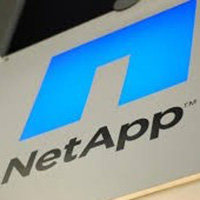
NetApp shared strategies to help customers optimize their transition to the modern data center at VMworld 2016.
NetApp also showcased its industry-leading flash portfolio and its newest joint innovations with VMware.
This conference was a unique opportunity for customers to learn from NetApp experts about innovative ways to simplify, accelerate, and cloud-enable their VMware environments.
VMworld opened on August 28th at the Mandalay Bay Hotel and Convention Center in Las Vegas and ran through September 1st.
Attendees connected with NetApp in its booth, which featured demonstrations, mini theater presentations, and opportunities to meet with subject-matter experts.
Featured solutions included NetApp All Flash FAS and SolidFire flash systems, FlexPod converged infrastructure, hybrid cloud offerings, ONTAP 9 software, and the new NetApp SolidFire vCenter Plug-In (VCP) 2.7.
The new VCP further simplifies SolidFire management for VMware administrators… Read More
Look to 2017 for “Adult” Encryption Debate
Excerpted from The Hill Report by Joe Uchill

FBI Director James Comey is welcoming the brief lull in the encryption debate, hoping that it will reemerge next year as a less passionate, more fact-based “adult conversation.”
Comey seemed willing to accept the result of a sober conversation during comments Tuesday at the 2016 Symantec Government Symposium in Washington.
But he appeared incredulous it would result in anything but requiring tech companies to provide law enforcement a technological means to access currently irretrievable encrypted data with a warrant.
“At the end of the day, if the American people say ‘You know what, we’re okay with that part of the room being dark, we’re okay with, to use one example, with the FBI in the first 10 months of this year getting 5,000 devices from state and local law enforcement and in 650 of those not being able to open those devices,” he said, without finishing the hypothetical.
“That’s criminals not caught, that’s evidence not found, that’s sentences far shorter for pedophiles and others because judges can’t see the true scope of their activity.
We should not drift to a place that a wide swath of America is off limits to judicial authority… Read More
Report from DCIA CEO Marty Lafferty
 There’s now only one month before the DCIA co-sponsored Internet & Mobile World (IMW) 2016, the largest business-to-business (B2B) expo-conference for information technology (IT) and digital solutions in Central & Eastern Europe (CEE).
There’s now only one month before the DCIA co-sponsored Internet & Mobile World (IMW) 2016, the largest business-to-business (B2B) expo-conference for information technology (IT) and digital solutions in Central & Eastern Europe (CEE).
Taking place on October 5th and 6th in Bucharest, Romania, the event brings together over 8,000 business representatives from across the region. The event agenda is now online and includes topics like robotics for businesses, cybersecurity, developing mobile apps, virtual reality, JavaScript, Java, IoT platforms and many more, to be hosted by over 130 international and local speakers.
At IMW 2016, even more than that number of exhibitors will present digital and IT solutions for businesses, in areas like information and infrastructure security, devices and the Internet of Things (IoT), business software, cloud solutions, and e-commerce.
There is a free expo pass for anyone wishing to visit the exhibition, and content passes are available for those interested in the five event stages – Main Stage, Enterprise Stage, Digital & E-Commerce Stage, Marketing Innovation Stage, and Dev Stage.
The event is also colocated with EuroCloud Forum, the largest European forum on the future cloud.
More than thirty international and local speakers will discuss the latest developments in Policy & Legal and Technology for Cloud.
Meet business leaders and policy makers from across the continent by securing your pass now. Share wisely, and take care.
Solving the Storage Problem
Excerpted from Cloud Expo Report by Stefan Bernbo
 Web-scale IT is a pattern of global-class computing that delivers the capabilities of large cloud service providers within an enterprise IT setting by reimagining positions across several dimensions.
Web-scale IT is a pattern of global-class computing that delivers the capabilities of large cloud service providers within an enterprise IT setting by reimagining positions across several dimensions.
The unprecedented explosion of Big Data and cloud services is driving the development of new storage architectures to store the information produced by this web-scale trend.
It is becoming increasingly clear that even a linear growth trajectory for storage is insufficient to deliver the quantity of storage needed for data produced by the Internet of Things (IoT).
Current architectures have bottlenecks that, while merely inconvenient for legacy data, are simply unacceptable for the scale of storage needed today.
In order to accommodate this unparalleled growth, enterprises are deploying web-scale architectures that enable virtualization, compute, and storage functionality on a tremendous scale. A bottleneck that functions as a single point of entry can become a single point of failure… Read More
NetApp Open Solution for Hadoop
Excerpted from Inside Big Data Report
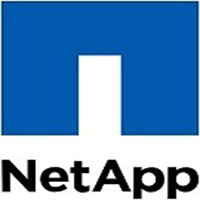 The NetApp Open Solution for Hadoop is built on the E2660 storage array, which provides the shared-nothing storage required by HDFS.
The NetApp Open Solution for Hadoop is built on the E2660 storage array, which provides the shared-nothing storage required by HDFS.
HDFS is the primary storage system used by Hadoop applications.
HDFS creates multiple replicas of data blocks and distributes them across compute nodes throughout a cluster to enable the efficient completion of MapReduce jobs and to provide data resiliency when disk drives fail.
This solution leverages the enterprise RAID features of NetApp E-Series external direct-attached storage (DAS) arrays and provides highly available, efficient data storage for Hadoop DataNode data.
This reduces extensive data block replication, bringing better storage efficiency and performance to the Hadoop system.
NetApp also leverages a FAS2240HA unified storage system to provide robust NameNode metadata protection and to support network booting of the servers in the Hadoop cluster, which eliminates the need for any internal disks in the JobTracker node and DataNodes… Read More
China’s New Tone in Drafting Cybersecurity Rules
Excerpted from Wall St. Journal Report by Eva Dou and Rachael King
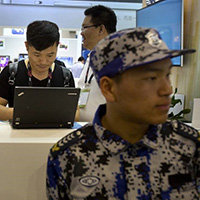 China is taking a more inclusive tack in instituting cybersecurity standards for foreign technology companies, allowing them to join a key government committee in an effort to ease foreign concerns over the controls.
China is taking a more inclusive tack in instituting cybersecurity standards for foreign technology companies, allowing them to join a key government committee in an effort to ease foreign concerns over the controls.
The committee under the government’s powerful cyberspace administration is in charge of defining cybersecurity standards.
For the first time, the body earlier this year allowed select foreign companies – Microsoft, Intel, Cisco Systems, and IBM – to take an active part in drafting rules, rather than participating simply as observers, said people familiar with the discussions.
How much influence the foreign companies will have over committee deliberations remains to be seen, these people said.
Over the past few months, the committee’s seven working groups – which focus on encryption, big data and other cybersecurity issues – have each met at least once.
Representatives from Microsoft and Cisco confirmed the companies are members. IBM and Intel didn’t immediately comment.
Taking a more consultative approach marks a shift for Beijing after nearly two years of battling the US and other Western governments… Read More
Distributed Ledgers — Future of Identity Security
Excerpted from SearchCloudSecurity Report by Rob Wright
 The distributed ledger approach used in blockchain technology has enormous potential for security applications, and one vendor is looking to turn that promise into reality.
The distributed ledger approach used in blockchain technology has enormous potential for security applications, and one vendor is looking to turn that promise into reality.
Ping Identity earlier this summer struck a partnership with a startup called Swirlds, investing an undisclosed amount of money in the company.
Swirlds, founded by CEO Leemon Baird, introduced what it calls hashgraph, which is similar to the distributed ledger featured in bitcoin’s blockchain scheme, with one important difference: instead of recording one transaction after another in a chain, the hashgraph algorithm weaves multiple transactions together at the same time in a graph.
Swirlds aims to use hashgraph for application development and distributed computing platforms, while Ping CEO Andre Durand sees potential for the distributed ledger in identity and access management systems.
In part one of SearchCloudSecurity’s interview with Durand at the Cloud Identity Summit 2016, he talked about the growth and obstacles of the identity as a service market.
In part two of the interview, Durand talks about hashgraph and how distributed ledgers can improve identity security. He also discusses the maturation and interoperability of identity standards such as OpenID. Here are excerpts from part two of the conversation. Read More
Dell and EMC Merger to Close This Week
Excerpted from Talkin’ Cloud Report by Yevgeniy Sverdlik
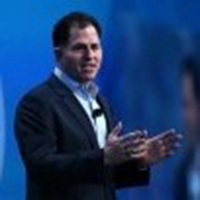
Dell and EMC announced plans to close the $67 billion merger between the two companies – the biggest merger between technology companies in history – on Wednesday, September 7. The announcement Tuesday follows approval of the transaction by Chinese regulators, the final step in the deal first announced in October 2015.
The new company will operate as Dell Technologies.
News reports that the two IT giants were close to announcing a closing date for the deal started circulating Monday, as EMC’s subsidiary VMware kicked off its annual VMworld conference in Las Vegas.
“Combined, we will be exceptionally well-positioned for growth in the most strategic areas of next generation IT including digital transformation, software-defined data center, converged infrastructure, hybrid cloud, mobile and security,” Dell chairman and CEO, Michael Dell, said in a statement. “Our investments in R&D and innovation, along with our 140,000 team members around the world, will give us unmatched scale, strength and flexibility, deepening our relationships with customers of all sizes.
EMC shareholders will receive $24.05 per share in cash plus tracking stock linked to EMC’s stake in VMware, which is about 80 percent… Read More
GE: The 124 Year-Old Software Start-Up
Excerpted from NY Times Report by Steve Lohr
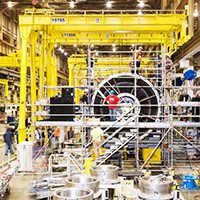 It may not qualify as a lightning-bolt eureka moment, but Jeffrey R. Immelt, chief executive of General Electric (GE), recalls the June day in 2009 that got him thinking.
It may not qualify as a lightning-bolt eureka moment, but Jeffrey R. Immelt, chief executive of General Electric (GE), recalls the June day in 2009 that got him thinking.
He was speaking with GE scientists about new jet engines they were building, laden with sensors to generate a trove of data from every flight — but to what end?
That data could someday be as valuable as the machinery itself, if not more so. But GE couldn’t make use of it.
“We had to be more capable in software,” Mr. Immelt said he decided. Maybe GE — a maker of power turbines, jet engines, locomotives and medical-imaging equipment — needed to think of its competitors as Amazon and IBM.
Back then, GE was returning to its heavy-industry roots and navigating the global financial crisis, shedding much of its bloated finance arm, GE Capital.
That winnowing went on for years as billions of dollars in assets were sold, passing a milestone this summer when GE Capital was removed from the government’s short list of financial institutions deemed too big to fail… Read More
Building Security for the Future
Excerpted from DJC Oregon Report by Stephanie Basalyga
 From building information modeling to project management software, Internet-accessible technology is making work in the building industry more efficient.
From building information modeling to project management software, Internet-accessible technology is making work in the building industry more efficient.
But with that convenience comes the real threat of attacks – from simple data breaches to acts of terrorism – on those systems.
The Associated General Contractors of America reports that in 2014 there were 117,000 cyber-attacks per day in the US, which represents a 50 percent increase over the previous year.
And cybersecurity experts say they expect those numbers to grow in the future.
But trying to proactively combat the attacks poses a problem for the cybersecurity industry, one that may feel familiar to some in the construction industry:
The industry may not have enough skilled workers, including women and minorities, to keep up.
One answer to cybersecurity’s staffing problems, though, may be as close as a lecture room on the Portland State University campus… Read More
Org Chart & Budget Key to Fed Cybersecurity
Excerpted from FedScoop Report by Shaun Waterman
The key to ensuring the cybersecurity of federal agencies lies not in any gee-whiz technology, but in the arcane details of the org chart and budgeting procedures, a panel of former and serving officials said Thursday.
“Structurally, from a budgeting perspective, we’re not set up for for success in federal cybersecurity,” said Thomas McDermott, the acting deputy assistant secretary for cybersecurity policy at the Department of Homeland Security.
“The way the federal budgeting process works, with one-year money, it makes it much harder to spend on long-term upgrading infrastructure, as opposed to continuing to patch old and frankly often indefensible IT systems,” he said.
The panel was part of FedScoop’s Lowering the Cost of Government IT Summit at the Newseum.
McDermott said the challenge was “how to normalize and build in cybersecurity as part of an agency’s normal budgeting process … making it part of the norm and not … off on the margins.”
It’s not just the question of how budgets are planned and spent, added Kiersten Todt, executive director of the President’s Commission on Enhancing National Cybersecurity: There’s also the vital matter of who’s in charge… Read More
Survey Roundup: IoT Brings New Risk Concerns for Firms
Excerpted from Wall St. Journal Report by Ben DiPietro
 A look at some recent surveys and reports dealing with risk and compliance issues.
A look at some recent surveys and reports dealing with risk and compliance issues.
IoT Blind Spots: A survey by digital security and compliance services firm Tripwire found 30% said their organizations are prepared for the security risks associated with internet of things (IoT) devices, while 34% said they believe their organizations accurately track the number of IoT devices on their networks. The survey of around 220 information security professionals who attended the Black Hat USA conference found 78% said they’re concerned about the weaponization of IoT devices for use in distributed denial-of-service attacks.
“The internet of things presents a clear weak spot for an increasing number of information security organizations,” said Tim Erlin, senior director of IT security and risk strategy for Tripwire. “By ensuring these devices are securely configured, patched for vulnerabilities and being monitored consistently, we will go a long way in limiting the risks introduced.”
Get Smart: Increased use of artificial intelligence could mitigate some pressure on financial institutions facing regulatory oversight of their know-your-customer and anti-money laundering programs, according to a report by technology analyst firm Celent and risk and compliance technology company NextAngles… Read More
Small Cloud Firm Helps Others Work with Giants
Excerpted from NY Times Report by Robert Cyran

Apollo Global Management and Searchlight Capital are making a $4.3 billion bet on capitulation.
Apollo, the private-equity company run by Leon Black, is leading a deal to take Rackspace, a cloud computing company, private after it struggled to compete with Amazon, Microsoft, and other technology giants.
If Rackspace’s strategic shift to sell services on these platforms succeeds, Apollo will have a nice payday.
About 70 percent of Rackspace’s revenue comes from managing server farms for individual companies.
That is a stable but relatively low-growth business.
The excitement has come from its public cloud operations, where it competes against Amazon Web Services and Microsoft’s Azure, selling on-demand computing and services.
The problem is this is a business of scale.
Bigger companies can negotiate to buy servers and power for less, and deploy gear more effectively… Read More
Read between the Lines of CSAs
Excerpted from SearchCloudComputing Report by Paul Korzeniowski

Cloud security assessments (CSAs) and certifications are designed to help businesses understand what steps a provider takes to protect confidential information.
But while security certifications may provide users with some level of comfort, they’re not always enough to guarantee that their information will be safe.
Data security continues to be a major bugaboo with public cloud. “After price, what level of security a provider offers is one of the first questions a business asks when examining a public cloud service,” said Dan Blum, Managing Partner and Principal Consultant at Security Architects LLC, a consulting firm based in Washington, DC.
Organizations often feel uncomfortable moving sensitive information from their own data center to that of a third-party provider.
To assuage that feeling, businesses like to confirm that a provider has completed certain cloud security assessments, or holds certifications.
Those cloud security certifications often consist of two elements… Read More
Is Energy Industry Ready for Open Source?
Excerpted from Houston Chronicle Report by David Hunn
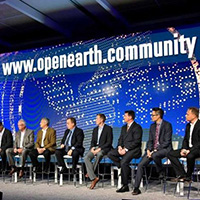 Is the oil and gas industry ready to enter the open source world?
Is the oil and gas industry ready to enter the open source world?
Landmark, a technology unit of the energy services company Halliburton, is betting that it is, unveiling a cloud-computing platform last week that will allow companies to collaborate on developing software to process the massive volumes of data they collect on everything from geology to seismology to chemistry to drilling to flows of oil and gas.
The idea is that easy and open access to the code on which the platform is based will lead to faster and better analysis of the data and ultimately to innovations that allow the industry to extract more oil and gas at lower costs.
“If you don’t innovate, you’ll be gone in 10 years,” said Michael Jones, Senior Director of Strategy at Landmark. “This isn’t business as usual for us.”
The initiative is following a model used for years by tech giants such as Amazon and Google, as well as automakers, software companies and business services firms.
Instead of protecting the code that runs the software, the model, called open source, opens the code to developers… Read More
Coming Events of Interest
Industry of Things World Europe — September 19th-20th in Berlin, Germany. IoT business models, new IoT markets and strategies, product lifecycle management, next generation data handling and value assessment, IoT organizational impacts, and IoT security issues.
EuroCloud Forum — October 5th-6th in Bucharest, Romania. The seventh annual EuroCloud Congress will be held for the first time in Romania. With the theme “Creating New Frontiers in European Cloud,” it will be the sector’s largest forum on the future of cloud in Europe.
Internet & Mobile World 2016 — October 5th-6th in Bucharest, Romania. The largest business-to-business (B2B) expo-conference for information technology (IT) and digital solutions in Central & Eastern Europe (CEE).
Security of Things World USA — November 3rd-4th in San Diego, CA. The next event in the DCIA’s partnership with weCONECT Group has been designed to help you find pragmatic solutions to the most common security threats facing the IoT.
Rethink! Cloudonomic Minds — November 21st-22nd in London, England. The newest event in the DCIA’s partnership with weCONECT Group will cover how IoT is impacting cloud strategies and how to take advantage of these two key technology trends.
Government Video Expo — December 6th-8th in Washington, DC. GVE is the East Coast’s largest technology event for broadcast and video professionals, featuring a full exhibit floor, numerous training options, free seminars, keynotes, panel discussions, networking opportunities, and more.
